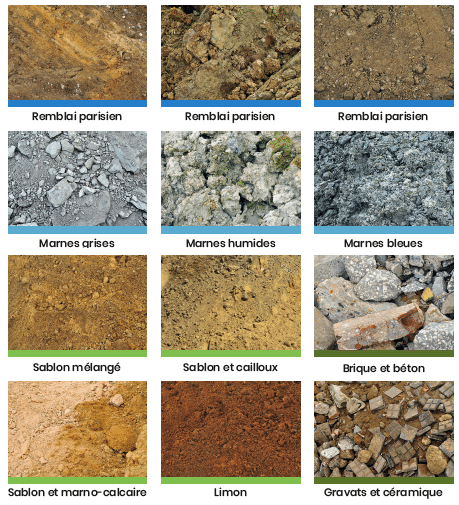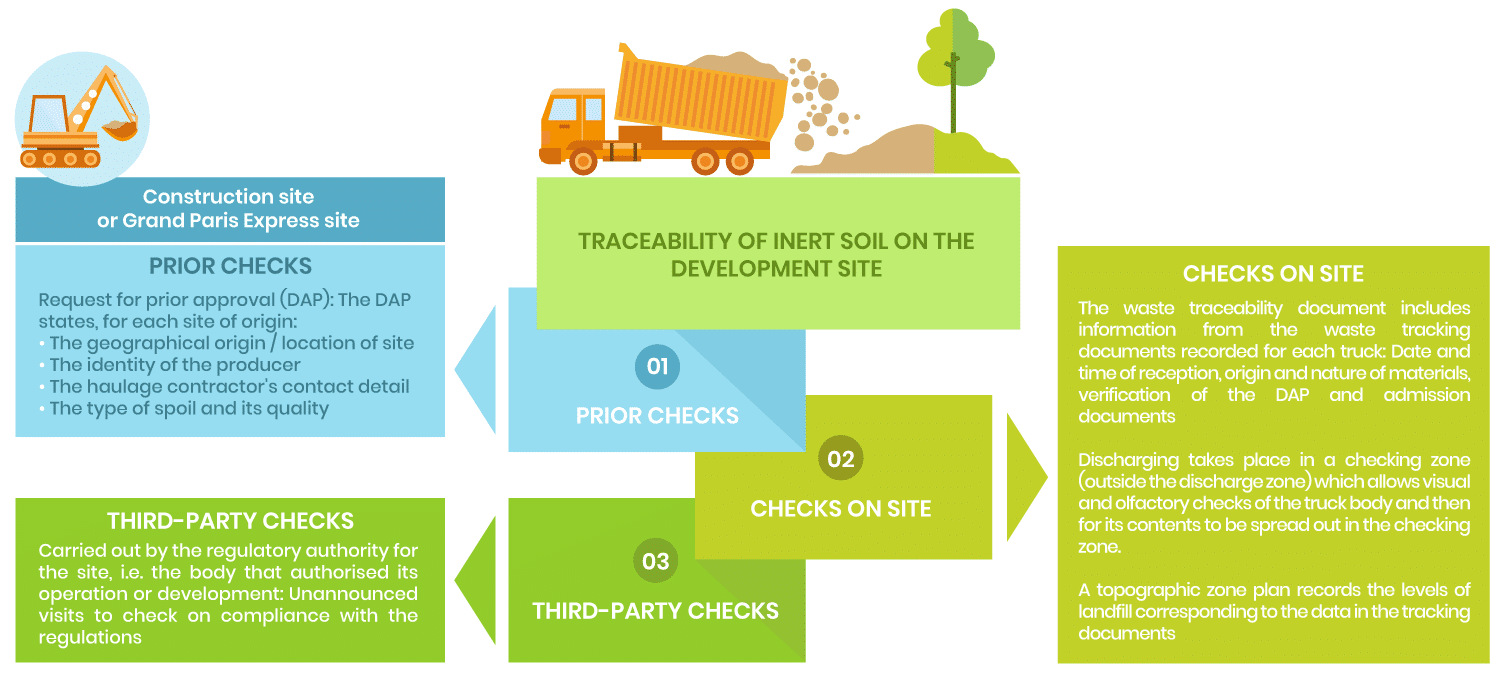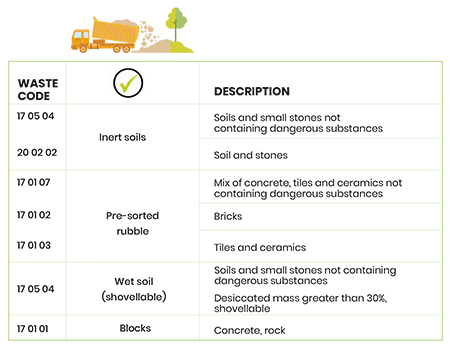Traceability of soil – how does that work?
A key factor
The traceability of soil is a key factor in the management and re-use of excavated soil. The expertise of the "Quality" and "Environment and Inert Soil" departments of ECT ensures for our customers an effective policy for traceability of soil.
Whatever type of licence an ECT site has, our internal procedures for traceability and management of soil are based on the French 'Code de l'Environnement', which is the strictest of all.
What are inert materials?
These are soils and materials that are not subject to physical, chemical or biological changes.
They do not decompose, they don't burn and they do not produce any other physical or chemical reaction.
Also, they are not biodegradable, and they don't cause deterioration in other materials with which they come into contact in such a way as to cause environmental pollution or to harm human health (Directive 1999/31/CE of 26 April 1999 - EU Official Journal of 16 July 1999).
For our leaflet on checking and traceability of soil, click here

Inert soils and materials - © Gil Fornet

3 levels of checking - in advance, on site, and after the event
Checking the origin of soil and materials, and checking their destination
3 levels of checking are applied to inert spoil accepted on our sites: A check in advance, checking on site, and third-party checking.
ECT's expertise allows us to ensure, both for our customers in the construction & public works sector and for the local authorities and their citizens, an effective use of analyses, diagnostics and soil traceability.
These materials will be turned away at the entrance to ECT sites:
- Polluted soil (hydrocarbons, metals, solvents, etc), slag
- Non-shovellable waste, liquid waste, and waste with a dry matter content below 30%
- Soil with unfavourable sensory qualities (smell, colour, etc)
- Waste packaging (paper, cardboard, plastic, polystyrene, etc)
- Waste with a temperature above 60° C
- Scrap metal, paint pots and tin cans generally
- Tyres and scrap rubber
- Glass, carpet offcuts, pipes, cables
- Bulky items (mattresses, refrigerators, etc)
- Plaster items (panels, partitions, tiles, etc)
- Materials containing asbestos (fibrous cement, etc)
- Wood, topsoil and plant/vegetable waste
- Waste in powder form
- Radioactive waste
- Coated e.g. with bitumen
- OIW (Ordinary Industrial Waste)

